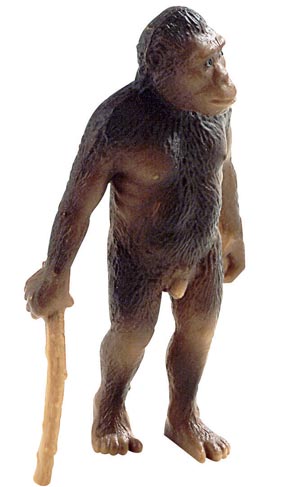Newly Discovered Fossil Could Be the First Evidence of a Great Ape
Scientists believe the hominids evolved in Africa from apes, however, the paucity of the fossil record has prevented researchers from learning more about the evolution of the apes themselves. Now the discovery of a twenty-million-year-old fossil in Uganda could help scientists piece together an aspect of primate evolution.
Great Ape
The freshly unearthed 20-million-year-old skull may have belonged to a common ancestor of humans and the other great apes so say excited palaeontologists. A team led by Martin Pickford, a palaeoanthropologist at the College de France in Paris, and Bridgette Senut, at the National Museum of Natural History in Paris, discovered the fossils last month, while excavating the semi-arid region surrounding the extinct Napak Volcano in northeastern Uganda.
The team attributed the partially complete skull to the species Ugandapithecus major, a hulking Miocene epoch ape known mostly by its other body parts.
Pickford commented:
“It was a pretty big animal, almost as large as a gorilla, about the size of a chimpanzee.”
His team plans to analyse the fossil more closely in France (it will be cleaned and prepared in France) and describe it in a Ugandan scientific journal. But he says its small brain already stands out.
He went on to add:
“You’re talking about an animal that has the muzzle of a gorilla with the brain size that would go with a baboon.”
Its small brain and other facial features such as its teeth and palette could suggest that modern chimpanzees and gorillas have evolved substantially from their ape ancestors, the researchers have concluded. The skull shares a number of features with modern-day orangutans, suggesting that the evolutionary lineage that gave rise to modern orangutans changed less.
Evolutionary Origins of Great Apes
But the evolutionary origins of great apes – humans, chimpanzees, bonobos, gorillas and orangutans – are poorly understood, due to the paucity of the fossil record. The discovery of well preserved elements of the skull are an important find. The size of the canines indicate that this animal was probably a male, the lack of wear on the teeth (molars) and other characteristics indicate that it died when it was about ten years of age.
A Model of an Australopithecus
Pickford stated:
“Finding the skull of Ugandapithecus is really going to focus the debate on that particular linage, but we must not forget there were quite a few other species running around at the same time.”
He went on to comment that closer examination should reveal more about the relationship between U. major and the extant great apes such as gorillas and orangutans that are alive today:
“My gut feeling at the moment is that it’s not far from the ancestor of modern African apes and orangutans. I’ve been waiting for about 30 years for this kind of discovery.”
For models and replicas of primitive hominins and other prehistoric mammals: Wild Safari Prehistoric Mammals and Early Human Figures.







Leave A Comment